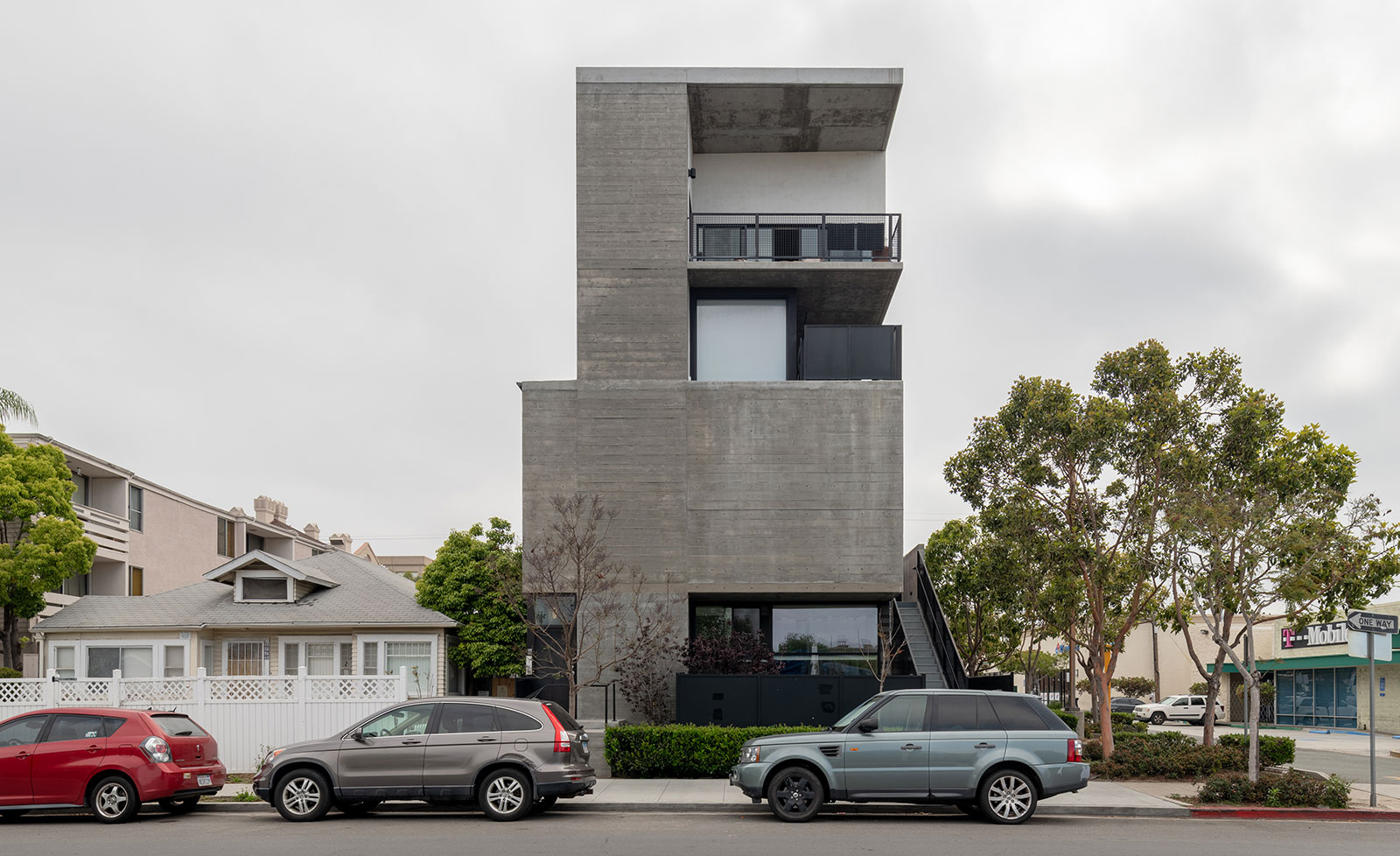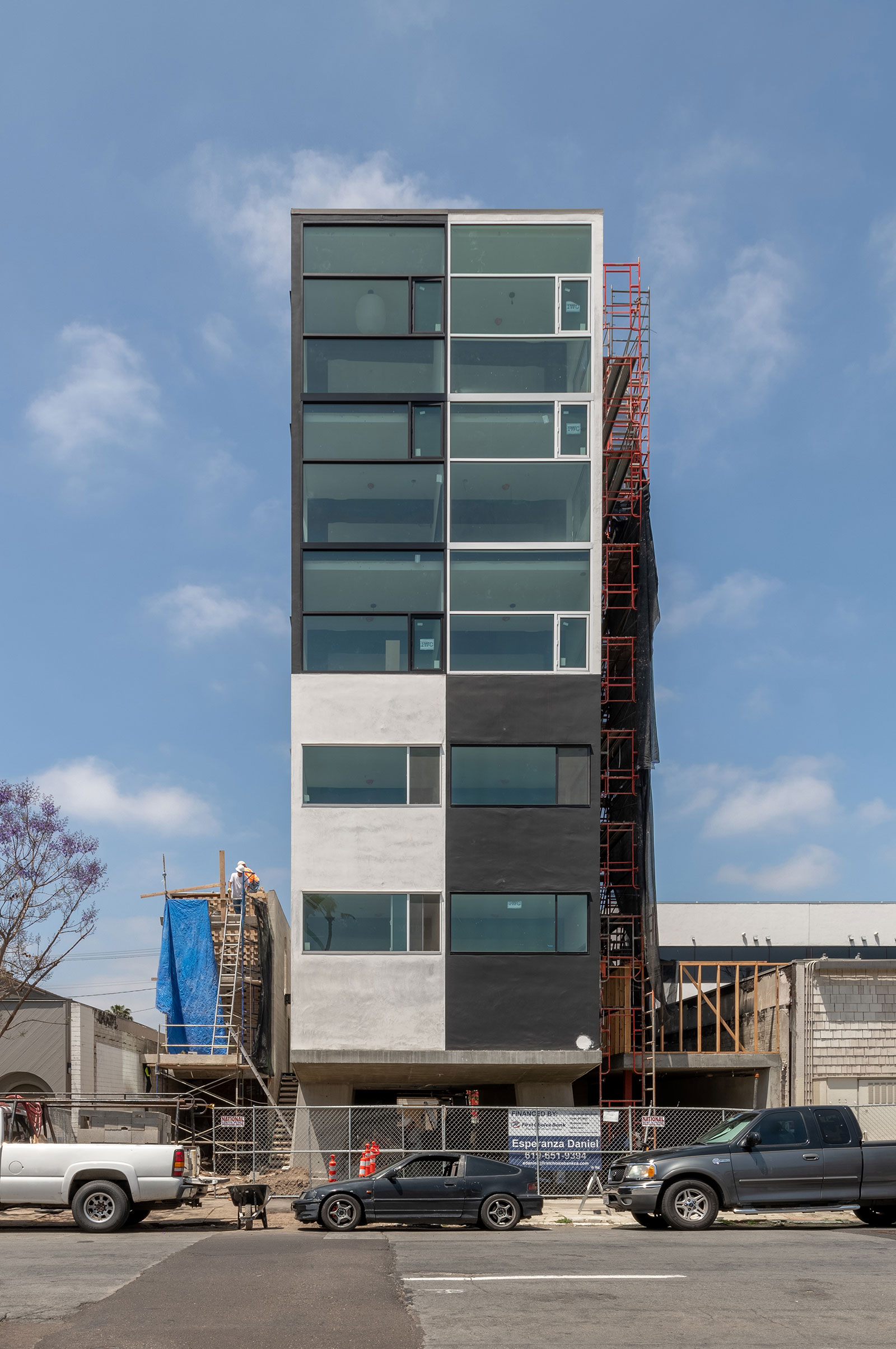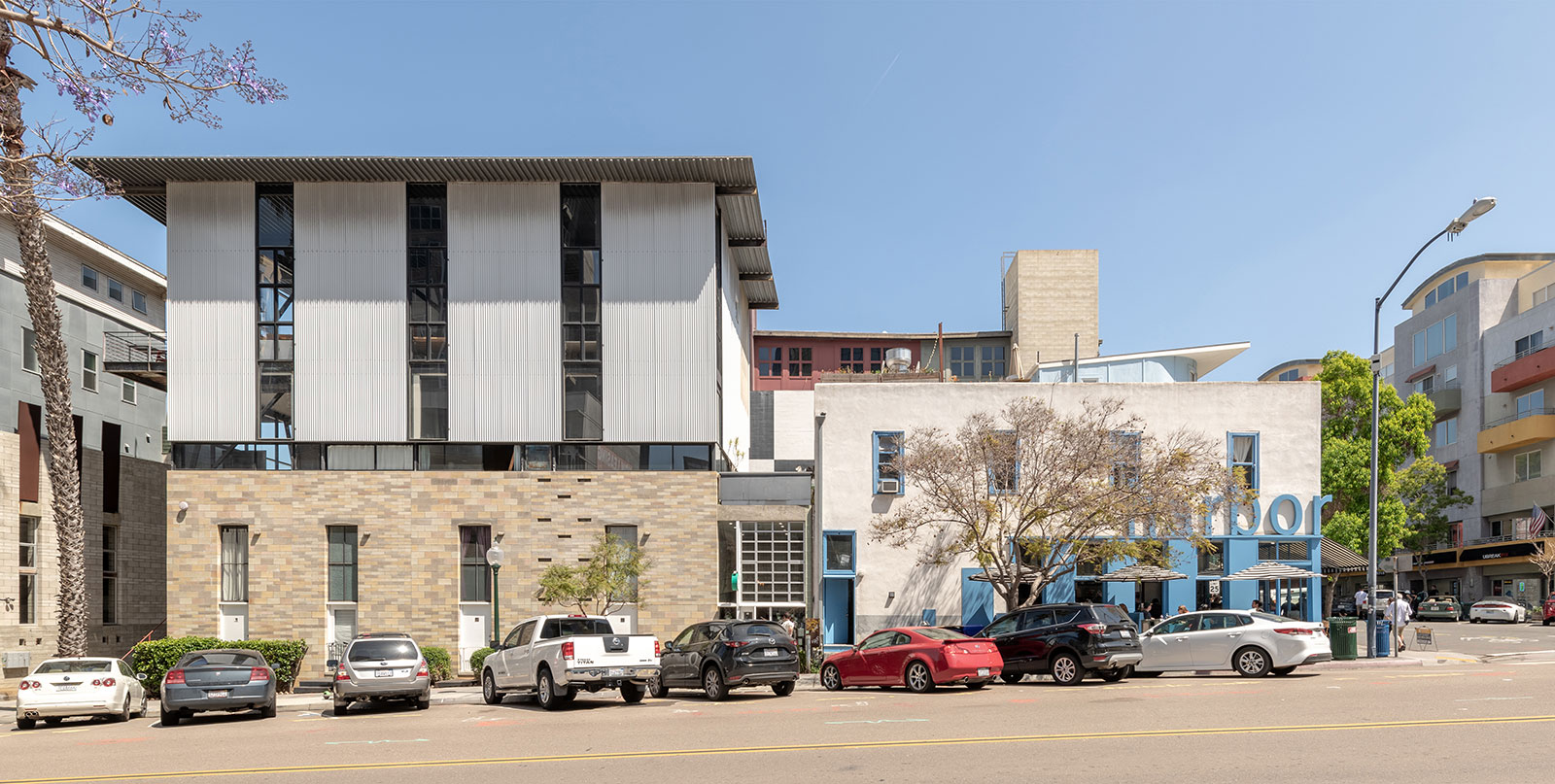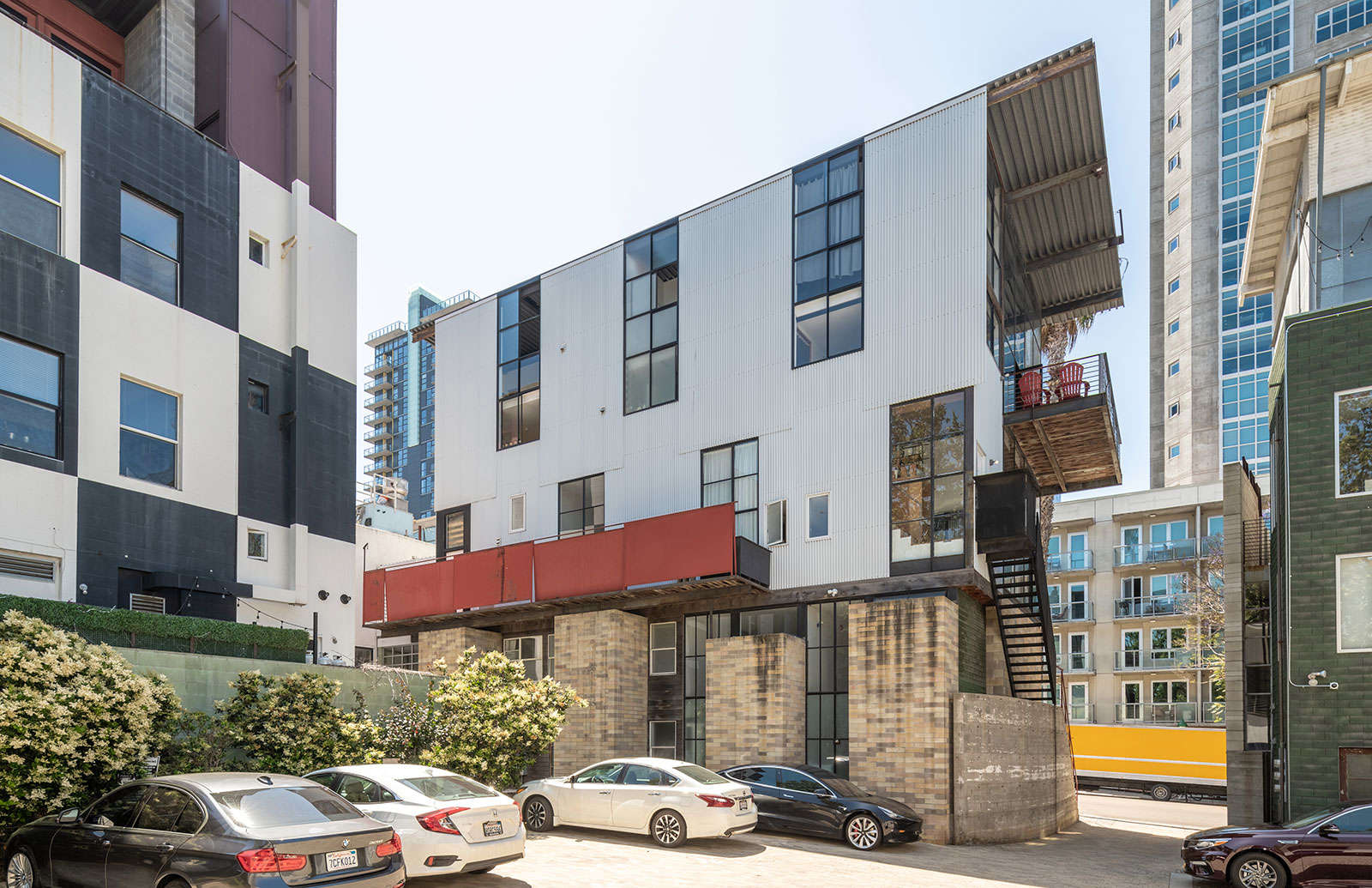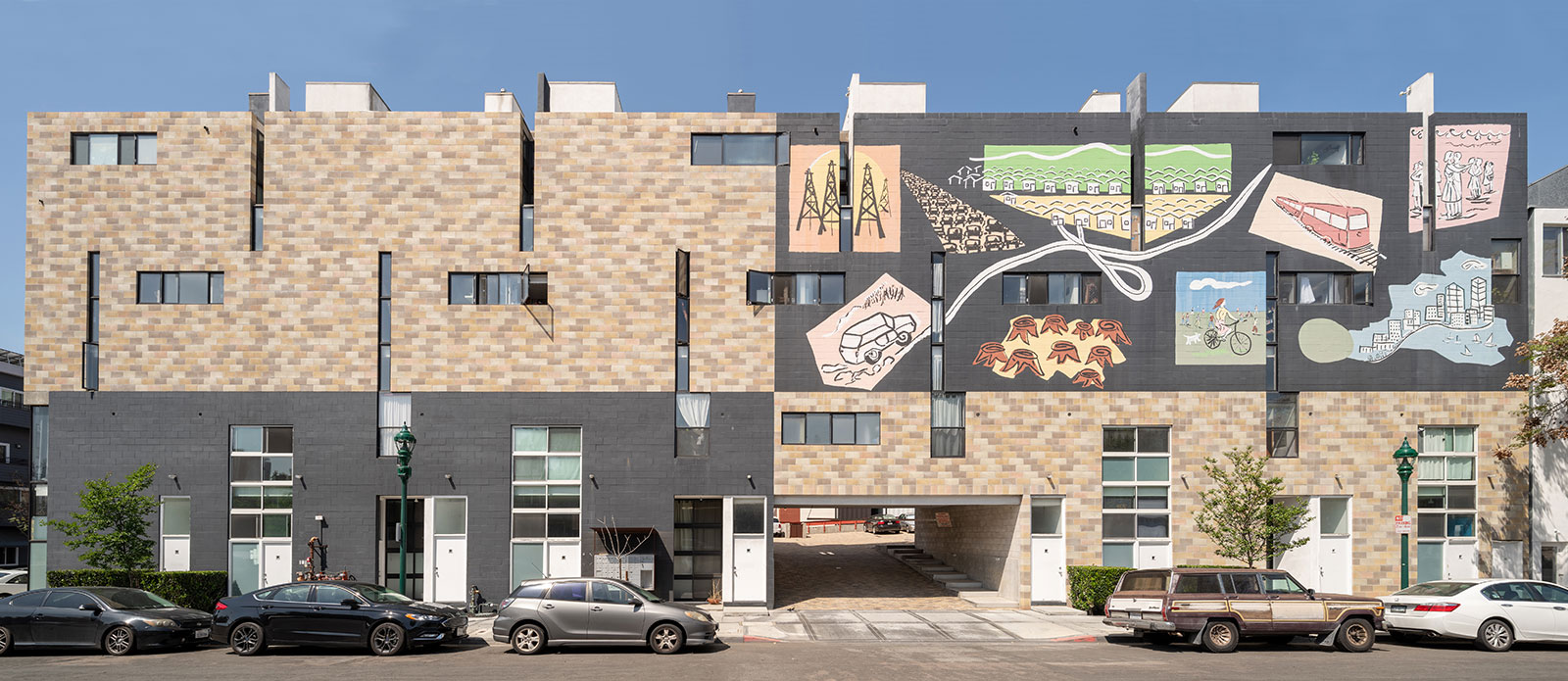
[Images by Andrew van Leeuwen]
This past summer we spent some time down in San Diego getting to know architect, developer, and builder Ted Smith. He is a founding member and principal of the RED Office in San Diego, and he chairs Woodbury University’s Master in Real Estate Development (MRED) program. Smith, along with the MRED faculty, has completed dozens of forward-thinking, boundary-pushing projects in and around San Diego. Through innovations like contemporary sleeping lofts, collapsible bathrooms, and multi-suite flats (to name just a few), Smith pioneered ordinances that champion affordable housing in Southern California, and he established new business models in the architecture industry.
We conducted a full-length interview with Smith — which was fascinating and will be published later this winter in ARCADE magazine — after which we took to the streets, camera in hand, and documented a sampling of his San Diego projects. Today’s post is an intro to Smith’s work, with some complementary commentary from your friends at BUILD.
.
First Avenue
This is one of our favorite Smith projects. We admire it for its sculptural qualities and the clever way the architects tweaked the traditional proforma by removing volume while maintaining rentable area. With measured architectural moves, the project uses a concrete grid, which is filled in for interior area, or left void for covered, outdoor terraces. A four-storey cast-in-place concrete wall maintains a firm urban edge along the street, while key volumes are subtracted behind. The structural framework allows for playful experimentation with color and texture, and windows that extend from the floor slab to the ceiling plate above.
.
Ninth & Beech Building
The shingled green half, containing three units and seven suites, was designed by Smith, and the white stucco half was designed by his long-time partner Kathleen McCormick. We had the opportunity to explore the interiors of McCormick’s design, and it is a wonder. A winding stair weaves its way up the four floors, and along the way it peels off into bedrooms, a bathroom, reading nooks, and storage cubbies. There’s an M.C. Escher feel to it, and visitors are rewarded at the top with a lofty common area filled with character, music, and life. The space spills out onto a generous outdoor terrace made for gatherings and marveling at the commercial airlines descending onto nearby San Diego International Airport.
.
Abpòpa Hillcrest
Designed by Smith and McCormick as the first RED Office project, the slenderness and height of this structure make it a beacon to the surrounding Hillcrest neighborhood. An impressively transparent façade contains clever loft spaces for short or long-term rental. Each 10’ x 30’ micro-loft is 11.5’ on one side, and 7.5’ on the other in order to accommodate sleeping lofts above. It’s that neighborhoody insider place that the design conscious seek out, and the location provides a great launch pad to San Diego. Looking out, the 360-degree views of the city and surroundings are stunning; looking in you’ll find an excellent case study for how Smith’s design mind works.
.
Merrimac
Fitting like a puzzle piece into the Little Italy neighborhood, this structure includes two double-height units and five suites. Clever fenestration breaks at the envelope, which establishes elegance and a striking night elevation. Parking is discretely tucked around back as the building holds the city edge with a textured masonry wall. Smith co-designed this project with Lloyd Russell.
.
The Essex
Likened to a battleship, this structure brings art and character to the streetscape. A four-storey mass mitigates noise and distraction from the adjacent freeway, and includes a mural by artists Kim MacConnel and Jean Lowe. Slices of glazing provide a rhythm to the exterior and organization for 36 dwelling units, and a crafty second level parking area in the back shelters commercial spaces facing the adjacent street. Smith co-designed this project with Lloyd Russell.
Smith’s projects cleverly provide solutions to the challenges of modern-day, urban housing. Some of the built forms are diagrams in and of themselves, and others are quite brutal in form; and all continue an important practice of experimentation in architecture. The buildings require the viewer to put aesthetic judgement and preference aside, and study them in terms of the answers and possibilities they present. Smith’s work maintains a resourcefulness and scrappiness that is unfortunately disappearing in the all-too-slick architecture of our cities today; yet it is often these grittier characteristics and design processes, not just the polished result, that brings people together and builds communities.
Cheers from team BUILD






